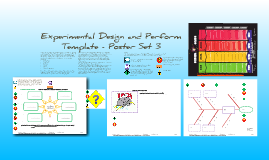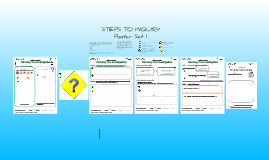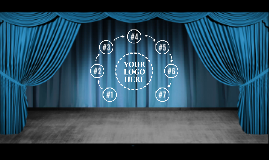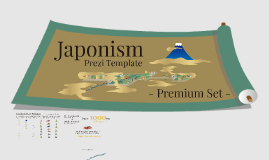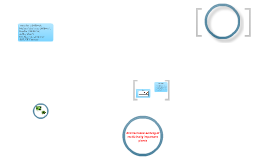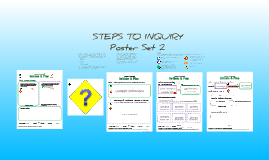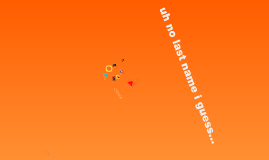Template - Poster Set 3
Transcript: Main idea: This provides a brief outline of the investigation. Materials: equipment needed, other resources (books, videos, etc) General Information: This will guide teachers through the process of using the Steps To Inquiry posters. It is the same for all lessons using a particular poster set. Students learn to organize their thinking and design their own inquiry experiments through careful observation of an object, situation, or event. They then conduct their experiments and report their findings in a lab report, poster, tri-fold board, slide, or video that follows the typical format of the scientific community studying the natural world. This prezi outlines the scaffolded approach and a scenario to illustrate its use in the classroom. The subject or topic is used to explain the framework for teachers to guide their students through the inquiry process. It is not designed for any specific grade level, and can be used successfully and appropriately at many levels. Teachers should use their professional judgment to decide what is suitable to the strengths, needs and interests of their students. Step 8: Rationale Student groups then provide an explanation to support their prediction. They can expand on the background discussions and research started in Step 4 by providing more details to support their predictions. As with the prediction statement, the teacher should not judge the content of students‘ rationale. Students need to express their own conceptions and clarify their own thinking before proceeding with their experiments. The teacher actively listens and watches for misconceptions and constructs learning experiences that challenge students to confront these misconceptions. At this point, student groups are almost ready to begin their experiments. Methods The Fishbone Experiment Organizer provides a procedural outline. Teachers should resist the temptation to require students to write out a detailed series of procedural steps at this timeenergy and enthusiasm for the project will wane if written procedures are required at this stage. Safety considerations should again be reinforced before allowing students to proceed. Step 1: Careful observation After the demonstration, students return to their seats to think for a few moments about what they have seen or share observations with a partner or small group. The teacher circulates as students write down their observations, or behavior descriptors, on yellow sticky notes (with one observation per note). This is the first time many of these students have used the Observations Starburst Diagram (Figure 1) so they are reluctant to start. The following scenario describes what happens next: Step 2: Select the dependent variable In scientific research, scientists make careful observations of behaviors and then choose one for further study—the dependent variable (DV). In this activity, the teacher or student selects one of the exhibited behaviors that is of interest to them, which then becomes the dependent variable of the study. This is why the Observations Starburst Diagram is helpful—the act of physically separating one sticky note (i.e., behavior descriptor) and declaring it the dependent variable reinforces the importance of isolating a single behavior. It also demonstrates that selecting a new dependent variable creates a new range and variety of possible studies. A class discussion of how to measure changes in the dependent variable—in terms of instruments, units, and techniques—may be helpful at this point, and ideas will vary depending on students‘ past experiences. This presents another diagnostic opportunity for the teacher to reflect on the vocabulary and phrasing students use for a specific measuring technique or task. The teacher may want to introduce a new device or procedure for students to consider. Since student groups design their own experiments, those interested in learning the new measurement technique can then be explicitly taught those techniques during a subsequent class. The power of this method comes from the fact that the ideas are coming from students. The teacher does not tell them what they have seen—or what they should have seen. It is important that all observations come from the students and are framed in the language they use. This observation period offers an excellent diagnostic opportunity for the teacher to assess students‘ level of scientific understanding through their use or misuse of scientific vocabulary and concepts. It is a time to honor student thinking and listen to their conversations as they debate what they did or did not observe. Through this part of the activity, students are encouraged to develop observation skills without attributing cause or attempting explanation. The sticky notes are particularly helpful for reluctant writers and promote risk-taking because they can easily be added, removed, or relocated to match changes in thinking. Legend: The following symbols appear throughout the prezi. Clicking on an






